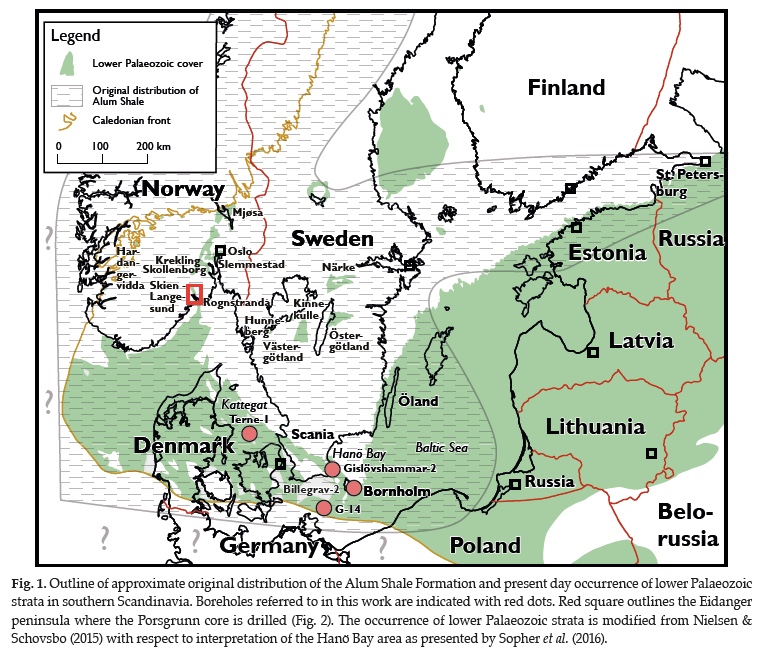I would almost say that I have become obsessed with the Swedish Alum Shale. With this super boring dark grey to black shale that has hardly any fossils in it and was deposited 500 million years ago on an even more boring almost anoxic oceanic shelf.
I guess that I have by now collected almost everything that has been published on the Alum Shale in Sweden. Of course I have not yet managed to read everything in my collection, but I will do so gradually.
Many researchers have dedicated their lives to various aspects of the Alum Shale: stratigraphy and correlations, fossil content, paleogeography, depositional environment, geochemistry, industrial use, and of course to the down side of the Alum Shale: its potential when exposed to oxygen and water to pollute surface waters, groundwater and soils.
Below is a figure from an article by Schovsbo et al. (2018) showing the original distribution of the Alum Shale (dashed) and in green color what is left of it today after all these million of years.

composition of the Cambrian Alum Shale Formation in the Porsgrunn core, Skien–Langesund district,
southern Norway. © 2018 by Bulletin of the Geological Society of Denmark, Vol. 66, pp. 1–20.
ISSN 2245-7070. (www.2dgf.dk/publikationer/bulletin).
Of course the Alum Shale was not deposited where it is found today and where Sweden is today. It was deposited in an ocean far from here, actually in the southern Hemisphere, as can be seen from the picture below. Yes, Sweden has moved a long way during all these millions of years!

I am happy to share my literature collection with Scandivanadium’s geologist/s so that they can gain a better understanding of what the Alum Shale (and the Dictyonema Shale) is and what its properties are. Maybe the mistakes they make will then decrease and they may then understand that the Dictyonema Shale is an Alum Shale, that bottom water conditions during its deposition varied between anoxic and dysoxic, meaning that there was no freshening (no oxygenated bottom waters) and that the fauna was poor and did not contain benthic bivalves. Maybe they could then also learn much more about the shale’s geochemical properties and maybe also that the extraction of one element leads to the release of other elements, such as for example uranium.

